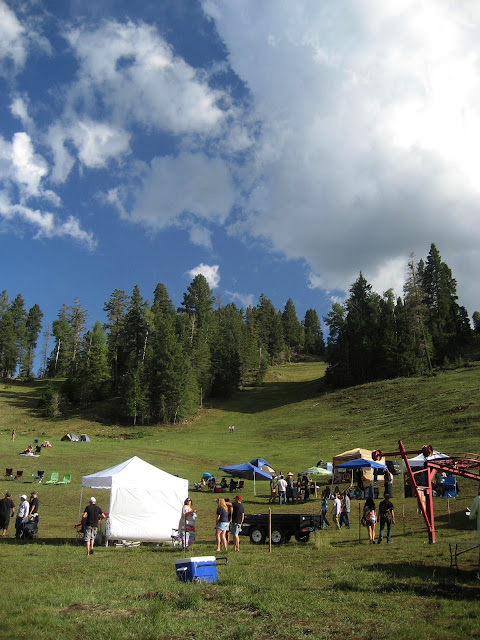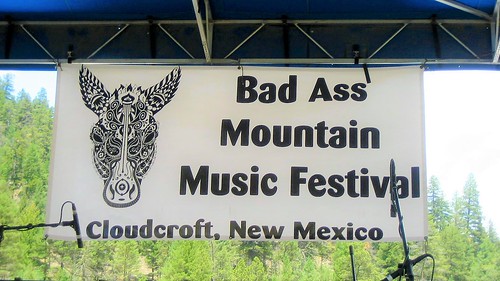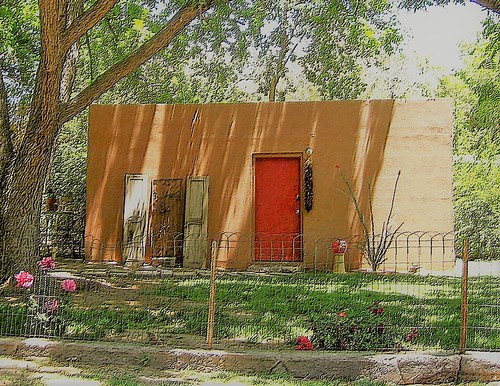 |
| Mangoes. Credit: Will Salter/Getty Images/Lonely Planet Images via The Guardian |
I'm in the process of backing up blog posts, and currently I'm deep into early 2011, when I was in Ethiopia.
When I wrote
this post, I found two elegant essays on mangoes by a Kenyan man named Ngishili who lived for a time in Addis. He wrote a blog called
Cock and Bull Stories. Every once in awhile, this blog disappears, then reappears, and because it hasn't been updated since late in 2012, I want to preserve the essays here.
The Mango Season, by Ngishili
March 10, 2011. The mango season has come to an end once again. Just a few weeks
ago, you would be greeted by women with large yellow mounds of huge
succulent mangoes in the market place, but now that the season is over,
we have to wait until next year to see all that again.
The mango season starts at the beginning of the year, peaks in mid
February and is over by mid March. The season corresponds to the hottest
months of the year when temperatures are well over 30 degrees
centigrade, and you can imagine how fulfilling it is to take a bite off a
thick slice of mango, or to drink from a tall cold glass of thick juice
when one is hot and thirsty or after a nice meal.
Back in the village, there would be hundreds of ripe mangoes
scattered under the many mango trees that dot the farms. There would be
nothing as refreshing as sitting under the shade of a mango tree on a
February afternoon and eat one mango after another, until the stomach
was so full that when one moved, it made a swashing liquid sound;
similar to that made by water inside a metal container on the back of a
woman as she laboriously climbed a hill as she came from the stream to
fetch the family’s water supply for the evening.
And the chicken would have a field day too. In their quest to search
for food, they would bore into the overripe mangoes with their beaks in
order to search for worms. After a few days of such activity, they all
would have weird shaped beaks. The reason is because the sticky mango
juice on the beaks would form perfect glue for mud to cake along the
length of the beak. So all the chickens ended up with filthy beaks that
had bulbous brown extensions of all shapes and sizes. And as they walked
in an awkward gait – perhaps with stomachs making liquid sounds – it
all seemed funny and life was light hearted even when the weather was in
its harshest.
In the city, I try to remember those moments each time I cut open a
mango and its unmistakable aroma fills the room. And it often leaves me
with a sense of wonder, at just what it takes to bring a single mango
into being. And my mind goes back to the flowering of the mango trees in
September, and I remember how vulnerable the little blooms are in the
wind. And how in a single violent shake of the trees by an unexpected
gust, most of the flowers will be blown off and half the mango crop will
be lost in a single moment. But by December, the mangoes have formed
and have fleshed out so much that every night, we would hear the sound
of branches breaking off noisily from the trees under the unbearable
weight of the mangoes. And in a few weeks, the first ripe mangoes would
begin to fall from the trees. And in a few more, the mangoes would be so
ripe, that one could make a small hole and suck the juice right off the
fruit like a thirsty mango nectar vampire, and then disdainfully throw
away the deflated lifeless shell for the cows and goats to eat.
During the mango season I think about God. I put myself in His place
and I think about how it would please me to see the spectacle of the
abundance of mango in the village. And how it would make me feel good
inside each time a person enjoyed the taste of mango. It reminds me of a
time I fell out with a friend, and then I met her years later and she
was wearing a necklace I had given her as a present. It made me feel
very good and I forgot about all the acrimony we previously had. Or
imagine what it makes you feel when someone flaunts a present that you
gave them? What if it was something that you made for them with your own
hands?
And so I think that God enjoys it as much – or even more – when we
enjoy the gifts that He has given us. And perhaps our enjoying the gifts
that we have been given is a very high act of Glorification. So, let us
enjoy all our gifts – our children, our health, our friends, our
talents – and not forgetting mangoes and all other fruits.
Season of Ripe Mangoes, by Ngishili
January 28, 2007. Today is sunny and I am looking out into the greenness of the fields
all around. It is a very beautiful day with the perfect blend for a
Sunday mid morning: an azure blue sky with tufty white clouds, noisy
birds and flirty butterflies, amplified fervent prayers from a gospel
church at a distance competing with the harmonious choir singing from
the Catholic Church in my neighborhood.
And I am just here breathing the
sweet air. If this day’s oxygen were a drink, it would be served as a
brightly colored tropical cocktail with two olives, a tiny umbrella and a
fancy pair of drinking straws. It might as well be, considering that
taking a deep breathe leaves one heady; at the brink of being
intoxicated. But all I can think about is mangoes. I know that the mango
trees are laden with fruit at this time of year. The mangoes are still
green and will be ripening en mass in a few short weeks. At that time,
every mango tree will litter the ground with yellow ready fruit, with
such mischief that it would be impossible to walk past the tree without
being dunked on the top of your head.
But already, curious boys are up the trees hunting for ripe mangoes
with a monkey’s dexterity. They move deftly from branch to branch
squeezing the fruits between their fingers for any sign of softness. The
softness of the fruit under pressure indicates that the mango has
eventually transformed from a green hard sour fleshy orb into a
succulent tangle of fiber that holds together the sweet smelling juice
of a ripe mango. However, the boys have to be careful so as not to come
down with any of the branches. For the mango tree’s branches are not
bendy at all. They snap as easily as a long, thin, fresh carrot. When
put under unbearable weight, the branch will separate from the tree with
a sharp unexpected crackle and noisily splash its burden on the ground.
The noisy come-down results from thousands of claps of stiff leaves as
they bounce against each other upon the unexpected jolt. For a moment,
it is almost as if the branch applauds the downfall of another impatient
boy who does not have the courtesy to wait for nature to take its full
course.
But most likely, the mango tree’s branches are breaking due to the
weight of the mango fruit. It is amazing how suddenly a branch can come
tumbling down, spewing hundreds of green mangoes all over the ground.
The bigger mangoes simply burst on impact before going into a lopsided
spin while the smaller ones bounce and then roll smoothly for a while
before coming to a stop. And in a very short while, all is quite, as if
nothing ever happened.
The ripe mangoes are available for about 1 month. In that time all
sorts of creatures that eat fruit will dig into the feast. It might be
confusing to find non vegetarian creatures tearing the mangoes apart,
but they would only be searching for insects that have bored themselves
into the fruit. Apart from that, almost everyone’s hands are sticky from
the mango juice and it takes an exceptionally tidy person not to have a
yellow stain even on a Sunday best dress. But no one really minds since
this season only comes once a year.



















































